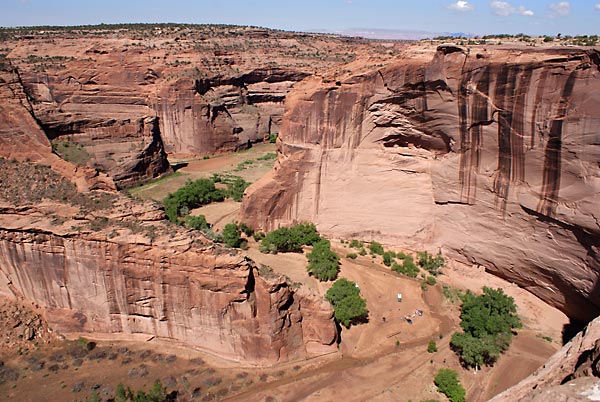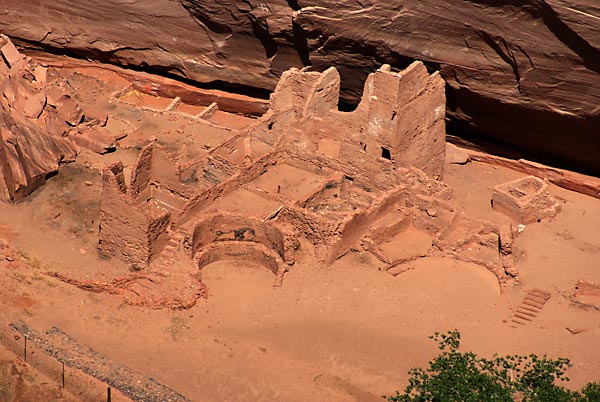
A
view of Canyon de Chelly from Junction Overlook on the south rim. The
canyon floor is quite flat and there are some Navajo farms in the
canyon. The cliffs are primarily sandstone. Near the mouth of the
canyon the cliffs are about 30 feet high, while deeper into the canyon
they are 500 - 1000 feet high.

The White House ruins were ocuppied by the ancestral Puebloan people about 1,000 years ago. The White House name arises from the white plaster used on the upper dwelling. A 2.5 mile round trip trail from the rim to the ruin starts from this view point. We took the trail, which as an interesting 2 hour hike since you descend about 500 feet, but the best views of the ruins are from the rim.

The White House ruins were ocuppied by the ancestral Puebloan people about 1,000 years ago. The White House name arises from the white plaster used on the upper dwelling. A 2.5 mile round trip trail from the rim to the ruin starts from this view point. We took the trail, which as an interesting 2 hour hike since you descend about 500 feet, but the best views of the ruins are from the rim.








